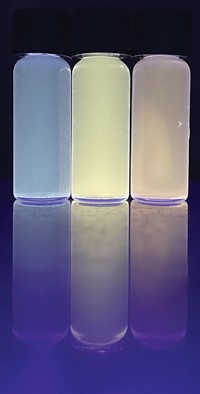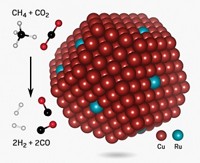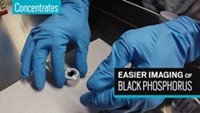Advertisement
Grab your lab coat. Let's get started
Welcome!
Welcome!
Create an account below to get 6 C&EN articles per month, receive newsletters and more - all free.
It seems this is your first time logging in online. Please enter the following information to continue.
As an ACS member you automatically get access to this site. All we need is few more details to create your reading experience.
Not you? Sign in with a different account.
Not you? Sign in with a different account.
ERROR 1
ERROR 1
ERROR 2
ERROR 2
ERROR 2
ERROR 2
ERROR 2
Password and Confirm password must match.
If you have an ACS member number, please enter it here so we can link this account to your membership. (optional)
ERROR 2
ACS values your privacy. By submitting your information, you are gaining access to C&EN and subscribing to our weekly newsletter. We use the information you provide to make your reading experience better, and we will never sell your data to third party members.
Materials
Quantum Dots From Coal
Scientists find an inexpensive source of graphene particles, which could be used in medical and electronic applications
by Bethany Halford
December 9, 2013
| A version of this story appeared in
Volume 91, Issue 49
Superman can take a lump of coal and squeeze it into a diamond. But for high-tech applications, such as photovoltaics, the Man of Steel might want to take a cue from researchers at Rice University and go for a different carbon allotrope. James M. Tour, Angel A. Martí, and coworkers have shown that it’s possible to synthesize graphene quantum dots—nanoscale carbon particles just a few atoms thick—from coal (Nat. Commun. 2013, DOI: 10.1038/ncomms3943). Other methods for making graphene quantum dots require expensive processes or chemical precursors and produce only small amounts of material. The Rice researchers found that they could create graphene quantum dots from inexpensive and abundant coal by using a single-step wet-chemical process. Coal, they explain, is made up of nanometer-sized crystalline carbon domains linked by aliphatic amorphous carbon. Crushing the coal and bathing it in acid breaks up the amorphous carbon and releases the crystalline quantum dots. The resulting nanoparticles could find use in many applications, including biomedical imaging and optoelectronics.





Join the conversation
Contact the reporter
Submit a Letter to the Editor for publication
Engage with us on Twitter